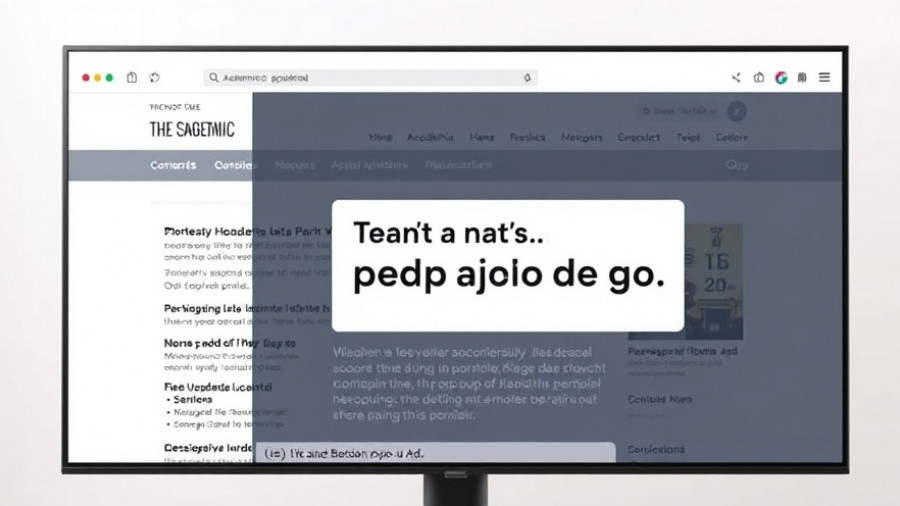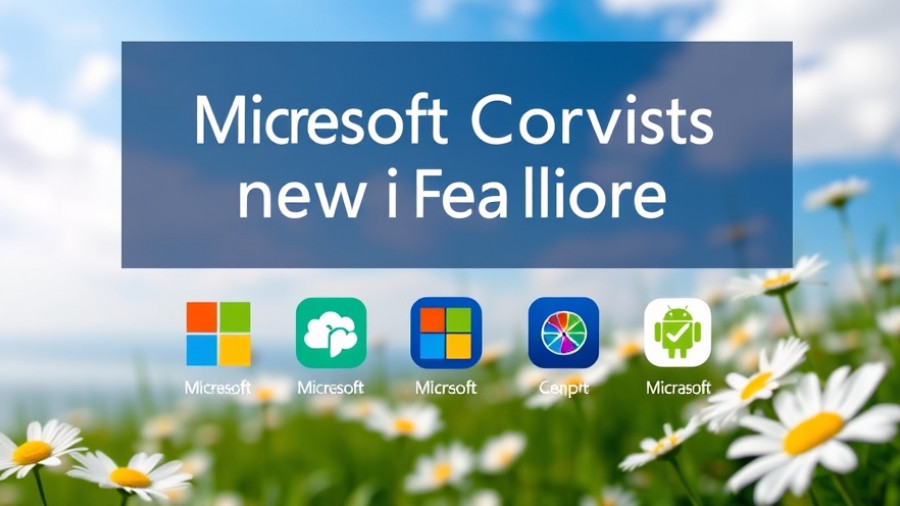
The Evolution of Microsoft 365 Copilot
Microsoft is making notable strides in the AI landscape, and their recent addition of two new AI models from Anthropic to Microsoft 365 Copilot exemplifies their commitment to enhancing user experience. The Claude models—Claude Sonnet 4 and Claude Opus 4.1—are being incorporated to offer users alternative perspectives for handling tasks, particularly in research and data analysis.
Why Choose Between AI Models?
With the inclusion of Anthropic’s Claude models, users of Microsoft 365 Copilot can leverage a broader spectrum of AI insights. This choice is particularly valuable as each model is built on different datasets, allowing for considerable variability in their outputs. While OpenAI's ChatGPT remains a fundamental component, Claude’s unique insights can lead to richer brainstorming sessions and diverse reports. This collaborative functionality fosters smarter decision-making in organizations and enhances productivity.
Applications of Claude in Microsoft 365 Copilot
The capabilities of the Claude models are particularly pronounced within Copilot’s Researcher AI agents. They are designed to analyze data from everyday business activities—like emails and meeting notes—and produce new ideas and comprehensive reports. Claude Opus 4.1 stands out as the latest option, providing users with access through Microsoft’s Frontier Program. This flexibility in tool choice helps organizations optimize daily tasks based on their specific needs and goals.
Understanding Copilot Studio
Copilot Studio represents an exciting dimension of Microsoft’s AI strategy. Here, users can build personalized enterprise agents utilizing both Claude models and other OpenAI options. This innovation not only empowers users to tailor AI capabilities to specific business functions but also allows for continuous comparison in performance among different AI models. This feature enhances adaptive learning and problem-solving in real time.
The Current Landscape of AI Integration
The integration of these AI models into Microsoft 365 Copilot is emblematic of the evolving nature of workplace tools. As organizations increasingly rely on AI for operational efficiency, the ability to select between different models could redefine how tasks are approached. Furthermore, this move aligns with broader trends in technology where personalization and customization are key to user satisfaction.
Key Takeaways for Businesses
Adding two AI models to Microsoft 365 Copilot signifies a shift towards embracing diverse AI solutions. Businesses should take advantage of this range to see what best fits their working styles and preferences. The ability to explore various AI perspectives not only enriches the output but also stimulates creativity and innovation in problem-solving.
What’s Next in the AI Journey?
As Microsoft continues to innovate and integrate more options into its Copilot framework, users can expect further enhancements to their collaborative tools. It's essential for organizations to stay informed on these developments and integrate them into their workflow effectively. This adaptability will be vital in harnessing the full potential of AI within their operations.
In essence, the addition of Anthropic models within Microsoft 365 Copilot is a step towards more nuanced and effective AI usage. Whether your organization opts for the familiarity of ChatGPT or the distinct capabilities of Claude, the opportunity to explore different perspectives on tasks is now within reach, encouraging a smarter, more productive workplace.
As you navigate this evolving digital landscape, consider how you might implement these cutting-edge tools to enhance your team's capabilities.
 Add Row
Add Row  Add
Add 




Write A Comment